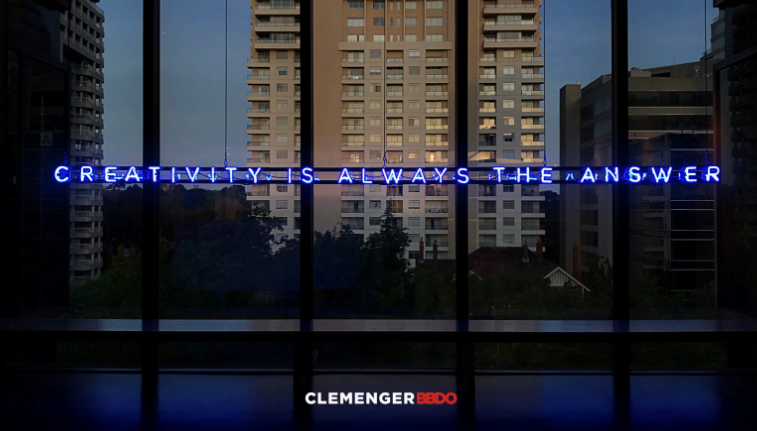Relentless, tough, demanding and brilliant: the culture that saw Clems Melbourne named creative agency of the decade
Clemenger BBDO Melbourne has become accustomed to winning awards. And last week it was named Mumbrella’s creative agency of the decade. Steve Jones talks to past and present executives to see what has made the agency tick.
As 2011 drew to a close, Peter Biggs, the then chief executive of Clemenger BBDO Melbourne, reflected on what had been a hugely successful year for the agency.

After being named Mumbrella’s creative agency of the year – the latest in a series of gongs that year – he observed the challenges that any agency faces in continuing to deliver results.
“In the fickle, fluid and fragile industry we call advertising – which seems to have all the symptoms of ADD – it is horrendously difficult for an agency to be consistently successful,” Biggs noted. “But this year, we were recognised as Australia’s most creative agency. Again. We were chosen as Australia’s most effective agency. Again. We also delivered a record commercial result. Again.”


congratulations to everyone at Clems Melbourne for this deserved recognition of their sustained success.
it’s a truly world class agency
respect
Congratulations to the entire team at Clemenger Melbourne!!! A truly formidable agency who continue to have a great story to tell.
Well done to the team at Clemenger Melbourne, you are the gold standard not only in creativity, but also in professionalism and client service. Very well deserved!
When you work with James McGrath, you learn what creative integrity really means. Rarely wrote a word, rarely drew a line yet elevated others to a level that they never dreamed they could achieve.
Congratulations Clems! Well-deserved.
Bloody well-deserved
Congrats to all Clems folk both past and present that made it happen
Seems strange not to mention and credit the efforts of Tom Martin and Julian Schreiber who were responsible for so much of the great work that contributed to the agency’s success.
I think Biggsy’s comment about most creatives going on to leadership positions in the industry covers that. There were a lot more CD’s than Tom and Jules, as brilliant as they were, over the past decade and that’s not meant as disrespect to them, more a reflection of how prolific the talent at clems is/was. I’d guess half of the big name agencies in Melb have ex-clems melbs as their heads-of in both suitland and/or creative. There’s nothing curious about it.
Hi Tom and Jules!
Seriously though, not everyone can get a mention. There are a few other major contributors who also don’t get a name check.
Yes the TAC ad won many awards, but when you look at the number of lives lost in the year before the ad was launched and after , you will notice the number is the same. So not effective at saving any lives – which you would assume is the business objective.
Great examples of creative work but I think a great agency is more than just the creative. You might want to spend some time looking at the Glassdoor reviews. It is a sweatshop, moral is horrible. It takes more than the work to make a great agency
So a campaign designed to educate a predominately young audience who don’t yet drive about the importance of road safety should see results that year?
It’s this simplistic, short-term thinking that ruins many a brilliant idea.
So what happened?
Congratulations Clems on your decade/s of groundbreaking work, work, work.
Congratulations Clems – absolutely well deserved.
They should definitely mention Tom and Jules as well as Ant and Rich. All four have made a massive impact on Clems.
Quite sickening that they openly state that they are tough, challenging and demanding. We all know exactly what that means. You don’t have to be a bunch of dicks to get the best out of people, especially when you place great strain on their mental wellbeing.
What a testament to the culture of this place. Love it. Thanks for writing it up.
Not only Rich & Ant and Tom & Jules, but think about someone else on the Exec Team who’s been there for the last decade and has been overlooked in the thank you’s. Ouch.
My favourite Clems moment was when they accidentally thought I was someone important and started inviting me to various schmooze meetings etc. I wasn’t, just a few bosses were away and I was asked to fill in. I went along with it and swanned around talking garbage, their canapes were pretty good.
Relentless, tough, demanding and brilliant. How interesting if anyone were to read that particular combination in a CV it would sound psychopathic. Without a doubt some incredible work, it’d be hard to find anyone that could argue with that – but can it be achieved any other way? Guess the next ten years will tell.
To my mind, Break Up epitomises the advertising problem.
Made the agency and marketer famous at Cannes.
But was a massive over-promise (because NAB was not actually different). Didn’t have an enduring brand effect. Didn’t move the dial on business measures.